TOYOTA
Toyota Motor Corporation (Japanese: トヨタ自動車株式会社 Toyota Jidōsha ) TYO: 7203, LSE: TYT, NYSE: TM, commonly known simply as Toyota and abbreviated as TMC, is a multinational automaker headquartered in Toyota, Aichi, Japan. In 2009, Toyota Motor Corporation employed 71,116 people worldwide (total Toyota 320,808). TMC is the world's largest automobile manufacturer by sales and production.
The company was founded by Kiichiro Toyoda in 1937 as a spinoff from his father's company Toyota Industries to create automobiles. Three years earlier, in 1934, while still a department of Toyota Industries, it created its first product, the Type A engine, and, in 1936, its first passenger car, the Toyota AA. Toyota Motor Corporation group companies are Toyota (including the Scion brand), Lexus, Daihatsu and Hino Motors, along with several "non-automotive" companies. TMC is part of the Toyota Group, one of the largest conglomerates in the world.
Toyota Motor Corporation is headquartered in Toyota City, Aichi and in Tokyo. In addition to manufacturing automobiles, Toyota provides financial services through its Toyota Financial Services division and also builds robots.
Company overview
Toyota headquarters in Toyota City, Japan
Vehicles were originally sold under the name "Toyoda" (トヨダ), from the family name of the company's founder, Kiichirō Toyoda. In September 1936, the company ran a public competition to design a new logo. Out of 27,000 entries the winning entry was the three Japanese katakana letters for "Toyoda" in a circle. But Risaburō Toyoda, who had married into the family and was not born with that name, preferred "Toyota" (トヨタ) because it took eight brush strokes (a fortuitous number) to write in Japanese, was visually simpler (leaving off the diacritic at the end) and with a voiceless consonant instead of a voiced one (voiced consonants are considered to have a "murky" or "muddy" sound compared to voiceless consonants, which are "clear"). Since "Toyoda" literally means "fertile rice paddies", changing the name also prevented the company being associated with old-fashioned farming. The newly formed word was trademarked and the company was registered in August 1937 as the "Toyota Motor Company".
From September 1947, Toyota's small-sized vehicles were sold under the name "Toyopet" (トヨペット). The first vehicle sold under this name was the Toyopet SA but it also included vehicles such as the Toyopet SB light truck, Toyopet Stout light truck, Toyopet Crown and the Toyopet Corona. However, when Toyota eventually entered the American market in 1957 with the Crown, the name was not well received due to connotations of toys and pets. The name was soon dropped for the American market but continued in other markets until the mid 1960s.
The Toyota Motor Company received its first Japanese Quality Control Award at the start of the 1980s and began participating in a wide variety of motorsports. Due to the 1973 oil crisis, consumers in the lucrative US market began turning to small cars with better fuel economy. American car manufacturers had considered small economy cars to be an "entry level" product, and their small vehicles employed a low level of quality in order to keep the price low.
Toyota camry
In 2007, Toyota released an update of its full size truck, the Tundra, produced in two American factories, one in Texas and one in Indiana. "Motor Trend" named the Tundra "Truck of the Year," and the 2007 Toyota Camry "Car of the Year" for 2007. It also began the construction of two new factories, one to build the RAV4 in Woodstock, Ontario, Canada and the other to build the Toyota Prius in Blue Springs, Mississippi, USA. This plant was originally intended to build the Toyota Highlander, but Toyota decided to use the plant in Princeton, Indiana, USA, instead. The company has also found recent success with its smaller models—the Corolla and Yaris—as gas prices have risen rapidly in the last few years.
Logo and branding
In 1936, Toyota entered the passenger car market with its Model AA and held a competition to establish a new logo emphasizing speed for its new product line. After receiving 27,000 entries, one was selected that additionally resulted in a change of its monikor to "Toyota" from the family name "Toyoda." It was believed that the new name sounded better and its eight-stroke count in the Japanese language was associated with wealth and good fortune. The original logo no longer is found on its vehicles but remains the corporate emblem used in Japan.
A replica of the 1936 Toyota Model AA, with the original Toyoda logo
Still, there were no guidelines for the use of the brand name, "TOYOTA", which was used throughout most of the world, which led to inconsistencies in its worldwide marketing campaigns.
To remedy this, Toyota introduced a new worldwide logo in October 1989 to commemorate the 50th year of the company, and to differentiate it from the newly released luxury Lexus brand. The logo made its debut on the 1989 Toyota Celsior and quickly gained worldwide recognition. There are three ovals in the new logo that combine to form the letter "T", which stands for Toyota. The overlapping of the two perpendicular ovals inside the larger oval represent the mutually beneficial relationship and trust that is placed between the customer and the company while the larger oval that surrounds both of these inner ovals represent the "global expansion of Toyota's technology and unlimited potential for the future."
The logo started appearing on all printed material, advertisements, dealer signage, and the vehicles themselves in 1990
Marketing
MEGAWEB, Toyota's permanent exhibition showroom and museum in Odaiba, Tokyo
Toyota's marketing efforts have focused on emphasizing the positive experiences of ownership and vehicle quality. The ownership experience has been targeted in slogans such as "Oh, what a feeling!" (1978–1985, in the US), "Who could ask for anything more" (1986–1989), "I love what you do for me, Toyota!" (1990–1997), "Everyday" (1997–2000)", "Get the feeling!" (2001–2004), and "Moving Forward" (2004–present).
Recently, Toyota's new United States marketing strategy has included such hits as "Swagger Wagon" which includes a throwback to the "old days of travel." and the marketing for the new Avalon,
Company strategy
Toyota's management philosophy has evolved from the company's origins and has been reflected in the terms "Lean Manufacturing" and Just In Time Production, which it was instrumental in developing. Toyota's managerial values and business methods are known collectively as the Toyota Way.
In April 2001 the Toyota Motor Corporation adopted the "Toyota Way 2001," an expression of values and conduct guidelines that all Toyota employees should embrace. Under the two headings of Respect for People and Continuous Improvement, Toyota summarizes its values and conduct guidelines with the following five principles:
- Challenge
- Kaizen (improvement)
- Genchi Genbutsu (go and see)
- Respect
- Teamwork
According to external observers, the Toyota Way has four components:
- Long-term thinking as a basis for management decisions.
- A process for problem-solving.
- Adding value to the organization by developing its people.
- Recognizing that continuously solving root problems drives organizational learning.
The Toyota Way incorporates the Toyota Production System

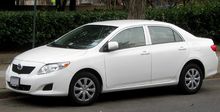







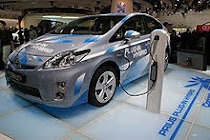
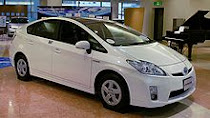
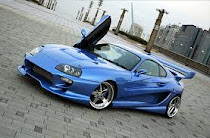

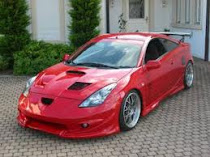







0 comments:
Post a Comment